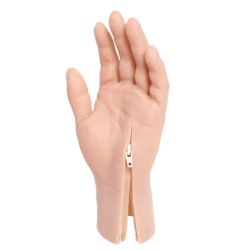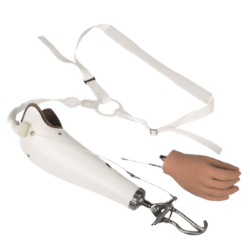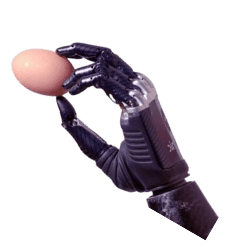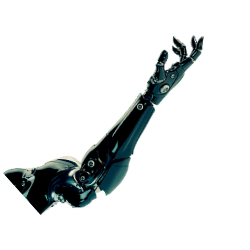Upper Limb Prosthetics
A prosthesis is the primary treatment of disability as a result of amputation to restore functional independence and improve quality of life.
The most frequent causes are trauma & industrial trauma, vascular complications of the disease, and cancer. Upper limb amputations can occur at the forequarter (interscapulothoracic), shoulder, trans-humeral, elbow, trans-radial, wrists, tran-scarpal, trans-metacarpal, and trans-phalangeal level.

Cosmesis Prosthesis
In the practice of cosmesis, the creation of life-like limbs made from silicone or polyvinyl chloride, has grown in recognition. Prosthetics such as artificial hands can now be made to imitate the appearance of real limbs, complete with freckles, veins, hair, fingerprints, etc.

Transradial(Below Elbow) Prosthesis
Transradial prosthesis is an artificial wearable limb that provides the functionality and/or appearance of human wrist and hand.

Transhumeral(Above Elbow) Prosthesis
A transhumeral prosthesis helps to substitute the function of a absent anatomical segment(s) from below the shoulder to (and including) the hand.

Body-powered Arms
A body-powered prosthesis relies on a system of cables or harnesses (along with the manual controls, in most cases) to control the limb itself. Essentially the patient operates and controls the prosthetic arm using other parts of the body such as, shoulders, elbows, or the chest.

Myoelectric Prosthetics
Myoelectric, is the term for electric properties of the muscles. A myoelectric-controlled prosthesis is an externally powered artificial limb that can be controlled with the electrical signals generated naturally by your own muscles.

Robotic Limbs
Robotic prosthetic limb integrates advanced mechatronics, intelligent sensing, and control for achieving higher command of lost sensory motor functions while maintaining the physical appearance of amputated limb.
